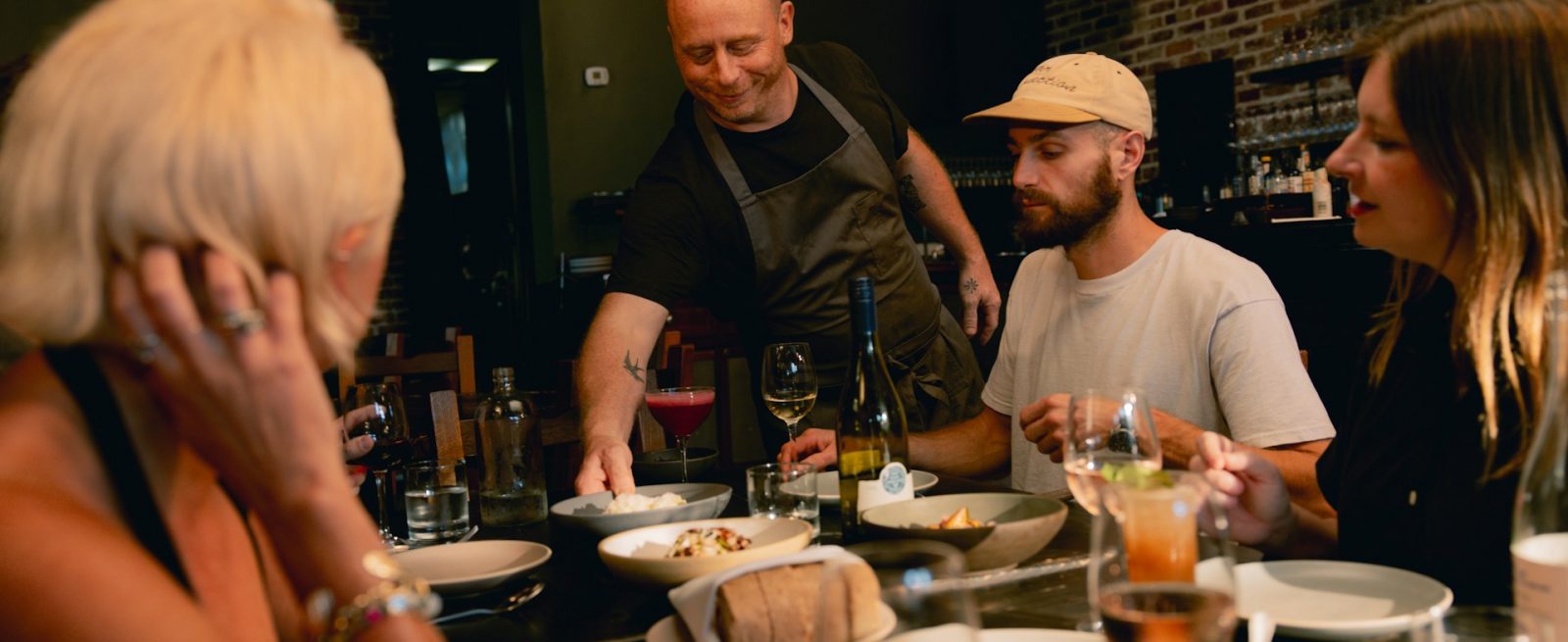Small But Mighty: How Independent Restaurants Win with Agility, Authenticity, and Community
4 Min Read By Andrew Glantz
National chains bring with them the benefits of size: expansive advertising budgets, advanced technology, and nationwide name recognition. But with that scale often comes complexity: more layers, less flexibility, and a growing distance from the communities they serve.
Independent restaurants and smaller multi-unit brands may not have the same reach, but they have something just as powerful: the ability to adapt quickly, get to know their guests by name, and become a meaningful part of their neighborhoods.
Below, we examine how small restaurants can leverage their strengths into a competitive edge, offering practical, community-driven strategies that go beyond general advice.
1. Move Fast. Learn Faster.
Large organizations often move slowly by necessity. Whether it’s a loyalty program, a seasonal menu, or a community initiative, every change tends to pass through multiple departments and approvals. Independent restaurants, by contrast, can stay flexible, and that flexibility gives you a chance to not just try new ideas, but to learn quickly what works and what doesn’t.
That kind of freedom is a real advantage. It means you can be creative. A few possibilities include:
-
Create a guest innovation panel: invite a small group of loyal customers to try new items or features first and give feedback in exchange for perks
-
Offer a “one-day-only” surprise dish: let your chef highlight whatever’s freshest or most inspiring that morning, and promote it on your sidewalk sign and social. This keeps your menu dynamic and lets you test ideas without commitment.
-
Offer micro-promos linked to weather or local events (e.g., “It’s raining: free coffee with any pastry today!”). Big chains can’t adjust offers on the fly like you can.
-
Set up a “feedback wall” in-store where guests can post sticky notes with ideas or vote on your next special. Fun, interactive, postable, and quick to implement.
-
Experiment with flexible happy hours: maybe test a late-afternoon window one week and a late-night one the next, to see what draws the most guests based on your specific neighborhood rhythms.
Small teams mean shorter feedback loops, faster learning, and more opportunities to test, refine, and deliver what your guests want, while larger competitors are still navigating their more complex processes.
2. Build the Kind of Local Partnerships Chains Can’t
Large brands often rely on national sponsorships or pre-approved marketing programs, which can make it harder to show up in a truly local way.
Independent restaurants, on the other hand, have the freedom to connect directly with the people and organizations around them, no corporate playbook required. That flexibility allows you to create partnerships that are personal, mutually supportive, and deeply rooted in your neighborhood.
Some ideas:
-
Work with schools beyond fundraisers: offer to host field trips where kids tour the kitchen, decorate desserts, or learn about food safety. Parents and staff will remember it.
-
Instead of just cross-promotions, co-create a product with another local business — e.g., a “local brewery burger” using their beer in your sauce, or a coffee-roaster dessert collab.
-
Let community groups “take over” for a night: maybe a local theater sells tickets, you build a themed menu around their show.
These kinds of connections don’t just build goodwill, they build relationships that can lead to new guests, stronger community ties, and word-of-mouth that no ad campaign can buy.
3. Let Your Team Shape the Culture
Big brands often rely on scripts and standard training to maintain consistency. But smaller restaurants have a different advantage: the ability to build a team that feels like the restaurant itself: familiar, friendly, and truly connected to the community.
That starts with who you hire. Look for people who already know and love your restaurant, or who live in the neighborhood and understand your guests. A server who chats with regulars like old friends, or a barista who remembers someone’s order. That kind of personal touch can’t be trained, and it makes a big difference.
Once they’re on the team, give your staff space to bring their personality to the job:
-
Encourage your team to create their own signature drink, dessert, or dish and feature one employee’s creation each month. You’ll boost morale and guest interest.
-
Let staff host their mini-events, which reflect their personalities and bring in their networks: a barista’s latte art throwdown, a server’s trivia night, etc.
-
Start a staff “shout-out wall” where team members post positive notes about each other. Happy teams create better guest experiences, and it takes no budget.
-
Encourage your team to manage a community board (physical or digital) that highlights neighborhood happenings: it positions your restaurant as a community hub.
A team that feels valued and included is more likely to stay, and more likely to create the kind of welcoming, consistent atmosphere that keeps guests coming back.
4. Make Community Core to Your Infrastructure
For many restaurants, community involvement is often limited to occasional moments, such as a holiday food drive, a donation jar, or a few charity posts on social media. Those gestures are thoughtful, but they often feel separate from the day-to-day experience.
One example is GiftAMeal, which helps restaurants turn everyday dining into community support. Guests simply snap a photo of their meal, and GiftAMeal donates to a local food bank on the restaurant’s behalf. It’s a simple way to create a moment of connection and purpose.
What truly stands out is when giving back becomes part of the restaurant’s identity, not just a message, but a mindset woven into everyday operations. When generosity becomes part of the guest experience, it sticks with people and gives them a reason to return.
Use Your Strengths – and Let Them Work for You
Large chains will always have scale, but independent restaurants have something just as powerful: the ability to move quickly, show up authentically, and build lasting relationships within their communities.
That’s where your real advantage lies: in the details. In your team that knows the neighborhood. In your freedom to try something new next week. In the genuine connections you form with guests and local partners.
You don’t need to outspend the competition. You just need to lean into what makes you different and make it part of how you do business every day.


